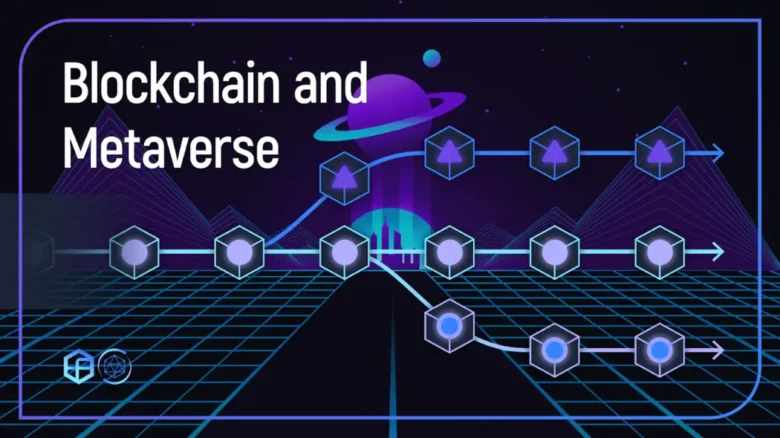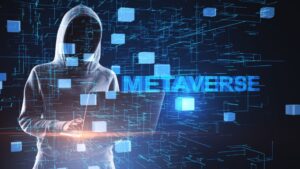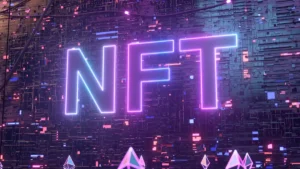Imagine a virtual world where you can buy land, throw a party, start a business, or explore, with your digital identity and assets safe and secure on a decentralized system. Welcome to the Metaverse, a futuristic concept that is quickly becoming a reality. But what makes trust, ownership, and interoperability possible in this immersive space? Blockchain technology is the answer. It’s more than just a term; it’s the key factor in keeping the Metaverse secure and open. Blockchain does much more than just support cryptocurrencies.
It also makes the metaverse more open by making it decentralized, traceable, and verifiable. Without blockchain, the Metaverse is just a digital environment controlled by a single company that effectively owns nothing. In this article, we’ll explain more about how blockchain makes the Metaverse possible, why it’s important, and where it’s going. It’s blockchain that allows the digital world to replace real-life interactions.
Core Concept of the Metaverse: Decentralization
Large tech companies that control your data, behavior, and digital assets operate traditional digital platforms. The metaverse aims to be different. It promises a decentralized experience where users own their assets and experiences without relying on a central authority. Blockchain technology makes such an arrangement possible. Data on a blockchain network isn’t controlled by a single person or group. A public ledger records every transaction, action, or exchange. Anyone can view it, but no one can modify it.
This feature eliminates censorship and promotes openness. The decentralization of the metaverse means users can develop, communicate, and even monetize without intermediaries taking a stake or changing the rules without permission. For example, Decentraland and The Sandbox allow anyone to buy virtual land and profit from it. All of this is thanks to the decentralization brought about by blockchain technology. It’s a power shift, giving power back to users and returning power to users.
NFT: How to Own Digital Assets
Digital ownership is made possible by the existence of NFTs (non-fungible tokens), one of the most revolutionary uses of blockchain in the virtual world. NFTs are digital certificates of ownership that cannot be copied or counterfeited. They allow people to own a variety of things, from virtual land and virtual images to rare in-game items and digital art. This functionality is crucial in the virtual world, where people can buy virtual items with real money. Without a reliable way to prove who owns what, chaos ensues.
The blockchain’s open, tamper-proof ledger solves this problem. You can track, transfer, or sell any NFT on the blockchain, just as you manage real estate in the real world. You can publicly question the owners of these NFTs. This creates a new digital economy where producers can be paid and users can profit from owning virtual property. Blockchain makes the virtual world more than just a game; it transforms it into a real digital community with real value.
Smart Contracts and Autonomous Transactions:
Smart contracts are another way blockchain technology strengthens the metaverse. These digital contracts can operate autonomously and are stored on the blockchain. The terms of the contract are written directly into code. Smart contracts can do everything in the metaverse, from purchasing land and upgrading virtual images to managing decentralized communities and hosting virtual events. The beauty of smart contracts is that they require no trust or intermediaries. Contracts are automatically executed when certain conditions are met, without delays, human intervention, or the risk of fraud.
For example, you can create a smart contract that automatically transfers money to you and grants access to others if you want to rent a virtual space for an event. It’s that simple and quick. This automated mechanism accelerates and secures transactions and contributes to the creation of complex digital civilizations in the metaverse, where people can easily communicate. This functionality is made possible by blockchain technology, which ensures that every transaction is recorded and cannot be manipulated.
Security and Openness in the Digital World:
Security is crucial in any digital space. This is especially true for the metaverse, where people invest their time, money, and creativity. Blockchain offers a solution because its structure is highly secure and transparent. Blockchain stores every action in encrypted blocks that are virtually impossible to alter or hack. This feature differs from the old system. This distinction is crucial for the metaverse, where people place their digital lives in the hands of the platform. Another advantage of blockchain is transparency.
Anyone can view the data because blockchain is open source. This makes people accountable and builds trust. In the gaming environment, for example, players can verify that the items they purchased in-game are authentic. Sellers can show their goods’ origins on the marketplace. Blockchain builds a secure foundation that significantly reduces the risk of theft, fraud, or unauthorized monitoring. This gives people the confidence to explore, build, and invest in metaverses for the long term.
Interoperability Across Metaverse Platforms:
At present, the majority of online platforms operate independently from one another. You can’t copy your data from one game or app to another. But the metaverse aims to create something bigger: a virtual environment where your identity, assets, and progress can flow freely between different platforms. Blockchain makes this interoperability possible. Thanks to standardized blockchain protocols, different metaverse systems can recognize and support the same digital assets.
For example, you can wear the same digital clothing or use the same NFT weapon in multiple games with the same blockchain. This feature makes the virtual economy more powerful and provides a better experience for everyone. Without blockchain, this kind of interoperability across different platforms wouldn’t be possible. It breaks down the barriers between virtual worlds and makes life in the digital world more seamless. The blockchain may protect universal avatars or wallets in the future, enabling their use in any part of the Metaverse.
Conclusion:
The metaverse is no longer just a science fiction concept; it’s a reality. But if it were just about virtual reality and beautiful graphics, it wouldn’t work. Blockchain technology is at the heart of this new digital frontier. It quietly powers everything from transactions and interoperability to ownership and security. It transforms the metaverse from a private playground into an open digital world where everyone has a stake. Blockchain is more than just a function; it’s the engine that drives the entire ecosystem.
NFTs enable digital ownership, smart contracts simplify interactions, and decentralization gives people freedom. As our physical and digital lives become increasingly interconnected, blockchain will be the technology that guarantees fairness, trust, and the survival of new ideas. If you want to be part of the next great revolution, you need to understand how blockchain works in the Metaverse. Whether you’re a creator, an investor, or just a casual explorer, this feature knowledge is crucial.
FAQs:
1. What is the role of blockchain in the Metaverse?
Blockchain enables secure, open, and decentralized interactions in the Metaverse. It enables digital ownership, allows people to transact securely, and decentralizes the virtual world.
2. What is the role of NFTs in the Metaverse?
In the Metaverse, NFTs allow people to own and exchange unique digital items such as land, avatars, and collectibles. These are stored on the blockchain, which allows for proof of ownership and security.
3. In what ways is decentralization important in the Metaverse?
Decentralization transfers power from central authorities to users. It ensures that the digital economy is free, open, and user-driven.
4. Are smart contracts used in the Metaverse?
Yes, smart contracts create and execute agreements without human intervention. People use smart contracts on Metaverse platforms to conduct business activities, organize events, manage communities, and more.
5. Can assets be transferred from one metaverse platform to another?
This can be achieved through blockchain-based interoperability. The same blockchain network can facilitate the migration of assets like NFTs and digital currencies between various virtual worlds as standards evolve.




